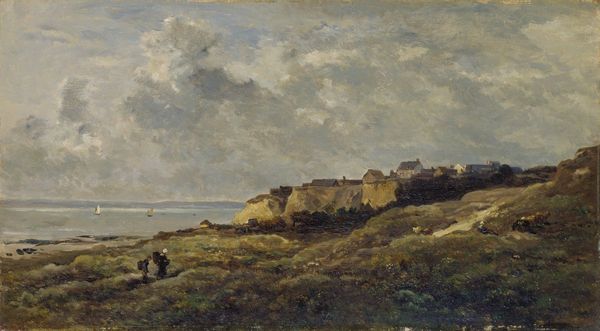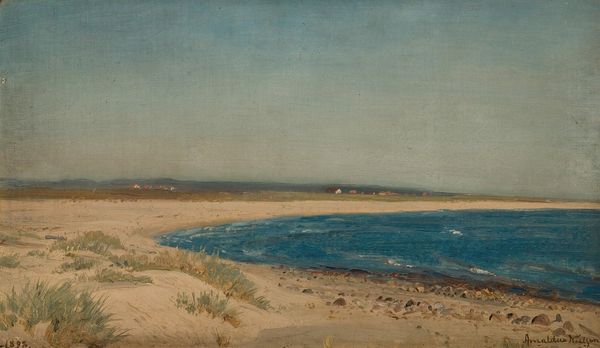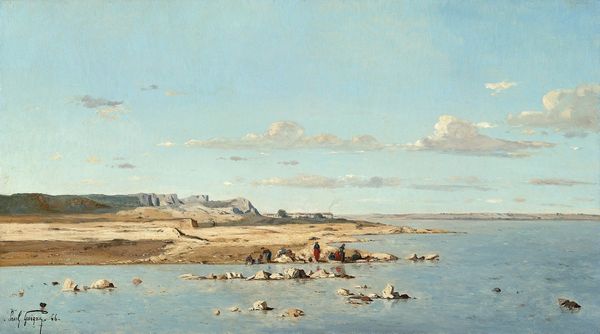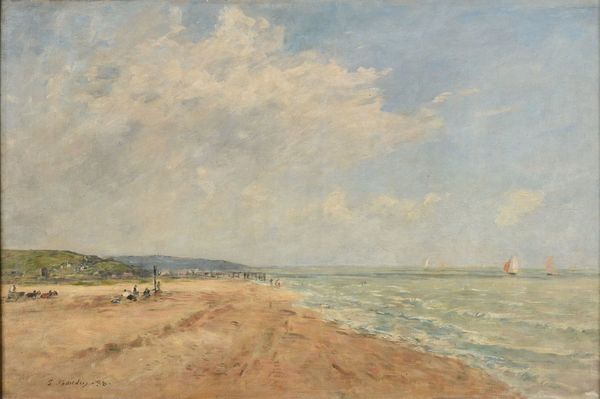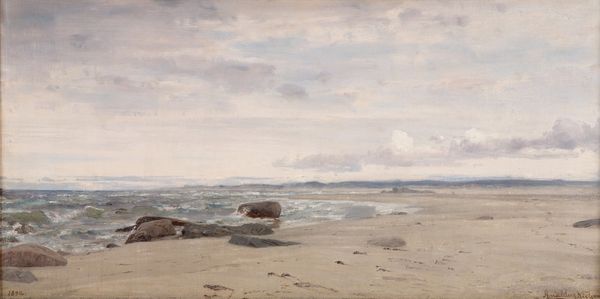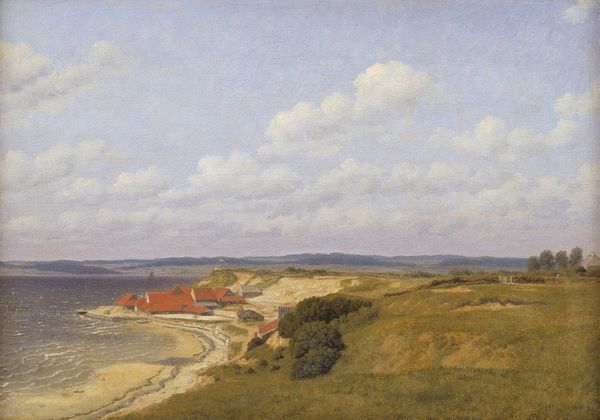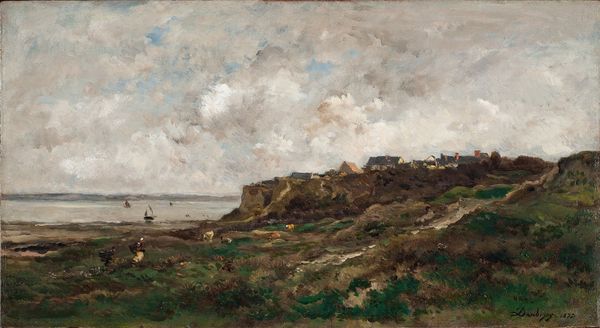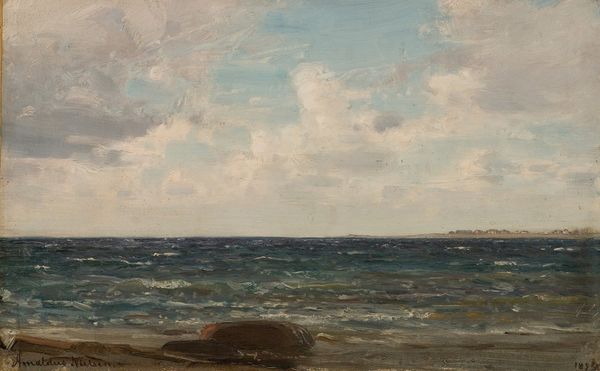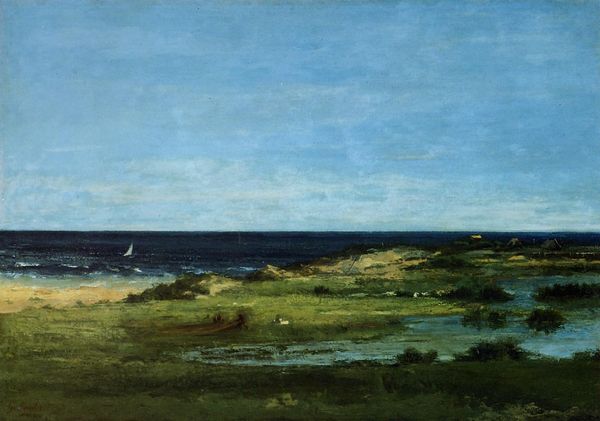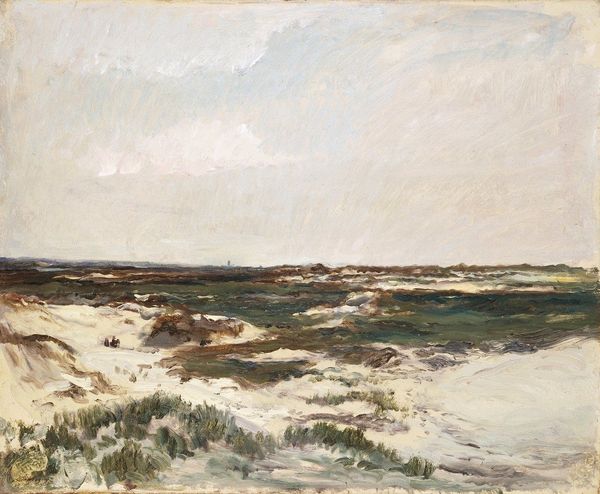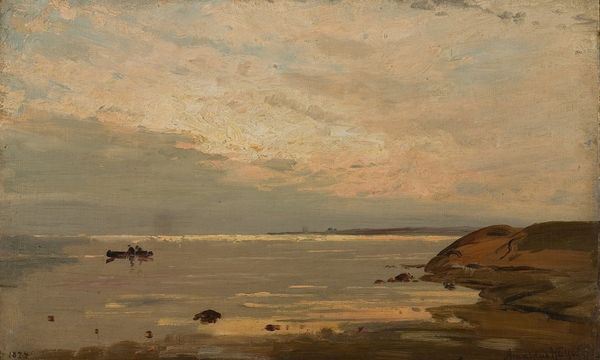
Copyright: Public Domain: Artvee
Editor: This is William Merritt Chase's "Morning at Breakwater, Shinnecock," circa 1897. It’s an oil painting, and what immediately strikes me is its tranquil, almost idyllic depiction of leisure on the beach. What do you see in this piece? Curator: Beyond the Impressionistic brushstrokes and the serene atmosphere, I see a visual document deeply embedded in the socio-economic context of the Gilded Age. Chase’s Shinnecock Summer School wasn't just about painting; it was a site of cultural production where wealthy women engaged in artistic pursuits as a form of social performance. The figures on the beach – are they truly at leisure, or are they enacting a carefully constructed scene of bourgeois respectability? Editor: That’s interesting. I hadn't considered the element of social performance. I was just thinking about how beautiful the light is. Curator: Consider who had access to such leisure, to the spaces depicted, and to the artistic education offered by Chase. These were privileges sharply divided along lines of class and gender. The impressionistic style, while seemingly apolitical, served to aestheticize and perhaps even legitimize a particular way of life. How do you think the painting engages with contemporary conversations around access and representation? Editor: I guess I always thought of Impressionism as just capturing a moment, but you’re right, there’s a whole layer of societal context that I was missing. Looking at it now, the breakwater itself feels almost like a barrier, both physical and social. Curator: Exactly! The breakwater could be a symbol of constructed boundaries, not just between the land and the sea, but also between social classes. How does understanding this context change your reading of the "tranquil" atmosphere? Editor: It definitely makes it more complex. It’s not just a pretty beach scene; it’s a glimpse into a very specific world, shaped by privilege and exclusion. Curator: Precisely. Art, even seemingly simple landscapes, can be a powerful lens for examining the social structures that shape our perceptions and experiences. Editor: This has totally changed how I'll look at Impressionism from now on! I’ll be sure to consider these questions when looking at other landscapes.
Comments
No comments
Be the first to comment and join the conversation on the ultimate creative platform.
